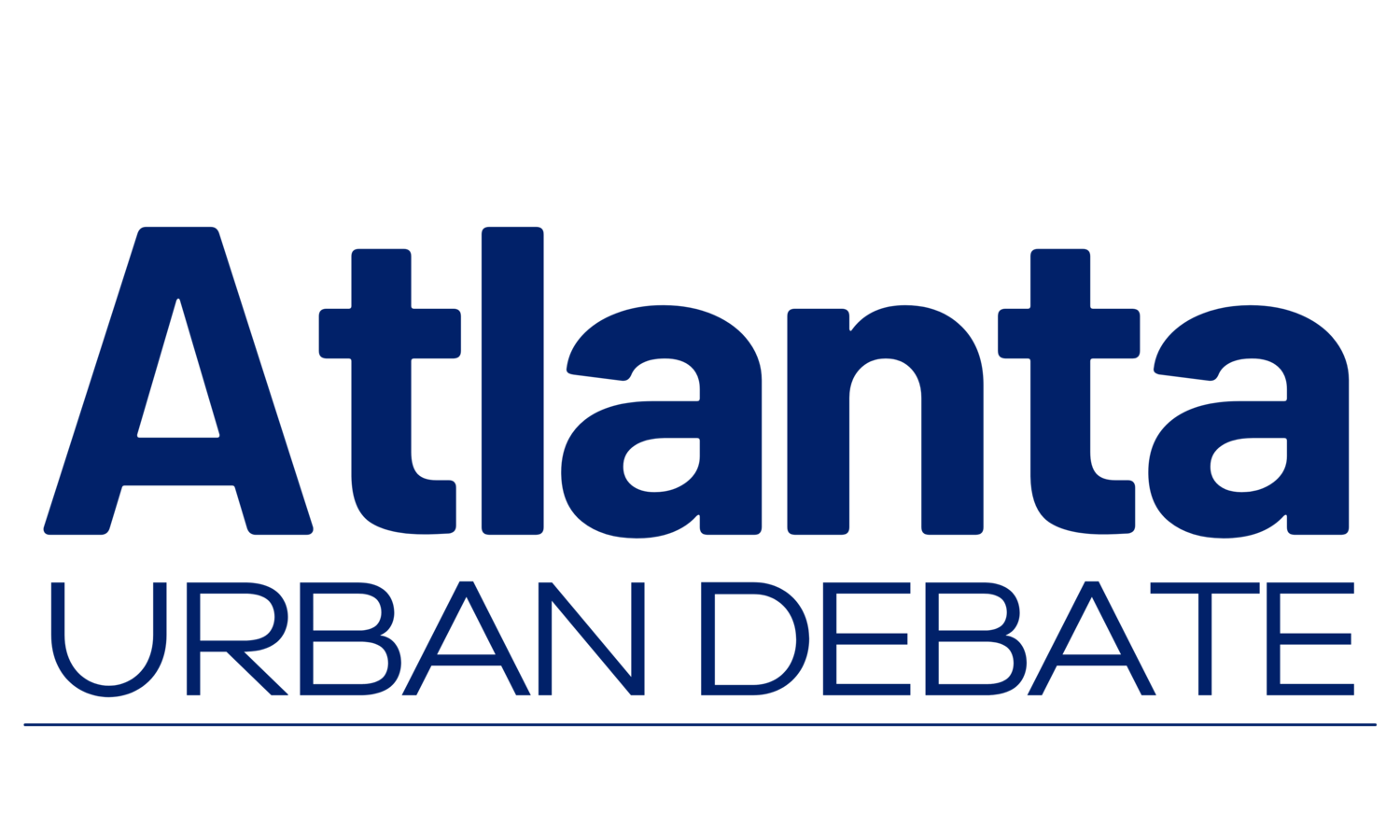The Atlanta Urban Debate League is committed to providing excellent debate education programs, services, and opportunities to diverse students, educators, and members of the community!
Working Through the Packet: Preparing Overviews with MR. T
Learning Objectives
Explain impacts in own words
Compare impacts using MR. T
Base explanations on evidence from the first constructive
Time Needed
20-25 minutes
Extra 10-15 minutes per additional overview if doing multiple overviews
Teacher Preparation
Review argument summaries for explanations of impacts and why the plan solves them (for affirmative advantages) or causes them (for negative disadvantages)
Resources & Materials
Packets (if using workbook version) for each student
2AC Overview Template (either shared digitally for students to reference or printed out separately)
Students should have their own paper (or device) to write on if they will just be referencing the template
Lesson Outline
Briefly review what the 1AC says for the first advantage. Make sure students understand what the evidence is saying the impact/harms of the advantage are and how the plan solves it.
Have all students look at the 2AC overview template for the first advantage. Tell students that the overview explains to the judge why they should vote for you by reminding them what the impact of your advantage (or disadvantage if you’re negative) is and explaining what it’s more important than the other team’s impact.
Ask students what the impact to the advantage is. Once someone has correctly identified the impact, ask which piece of evidence explains this.
In the first set of blanks (“The impact of the ____________ Advantage is…”)/on their own paper, have students write out a brief explanation of what the impact is, then state the cite for the 1AC evidence explaining that impact at the end.
Ex. “The impact of the Democracy Advantage is…the collapse of democracy, which results in global wars. That’s from our Etchenique 2023 evidence.”
Students should not be writing out entire paragraphs/longer explanations of the impact or advantage. If students write out long explanations, remind them that they have to read the overview, answer EVERY 1NC argument against the advantage, and read new evidence against the negative’s disadvantage all in one speech.
After students have finished their impact explanations, ask them how the plan solves the impact. Once they have correctly explained the solvency, ask which piece of evidence supports their explanation.
In the second set of blanks (“The plan solves the impact because…”), have students write out a brief (1-2 sentence) explanation of how the plan solves the impact based and add a cite for the 1AC evidence that supports their explanation.
After students have finished their solvency explanations, go over/review impact comparison/MR. T. Students may want to take notes on a separate piece of paper. Ways of telling the judge which side’s impact is more important can be remembered using MR. T:
Magnitude - how big an impact is; this includes both how many people the impact affects (scope) and how bad whatever happens to them is (severity)
Risk/Probability - how likely an impact is to happen
Timeframe - how soon an impact will happen
Without filling in any blanks, brainstorm explanations for why the impact of the advantage is important using MR. T. Try to get them to use the 1AC evidence to justify their explanations when possible.
After brainstorming, ask students which part of MR. T they think is the strongest and which one is the weakest.
In the last set of blanks (“Vote Affirmative because the Case outweighs the Disadvantage on...”), have students write out impact comparison explanations for the strongest 1 or 2 parts of MR. T identified by the group.
Points of Improvement
Students struggle to identify what the impact of the advantage/disadvantage is
A common example is students explaining the link/what the plan does instead of the ultimate consequence of the disadvantage
Students give no explanation for their MR. T comparisons or arguments don’t make sense
Ex. “The risk is 100%” or “The timeframe is immediate” for arguments that obviously are not guaranteed or currently happening (such as the US going to war)
Students confuse parts of MR. T
Ex. “The timeframe is soon because scientists agree climate change is an existential threat” (instead of saying the risk is high)
Students try to explain multiple advantages/disadvantages in one overview (not relevant for MS Novice)
If there are two advantages, each one should have its own overview, and if there are two disadvantages, each one should have its own overview. It’s fine to do just one overview in this activity, but make sure students know that overviews for distinct advantages/disadvantages are separate
Signs of Mastery
Explanations for why the plan solves (2AC) or causes (2NC) the impact of the advantage/disadvantage are based on 1AC/1NC evidence
All explanations are succinct (1-2 sentences)
MR. T arguments make sense for the impact
Instructor Notes
There are multiple ways students can reference 1AC evidence after their explanations as long as they are including the author name (and ideally date). The most intuitive but longest way is “That’s from our 1AC [author surname + year] evidence,” but they can also shorten it by saying things like “That’s [author name + year]” or “That’s 1AC [author name].”
If you have more than one instructor and want to split students up by speaker position, you can have 2As work on their 2AC overviews while 2Ns work on their 2NC overviews.
If you keep the group together, after going over the 2AC overview, it is useful to spend a bit of time on the 2NC overview so that students understand what’s different (explaining the impact to the disadvantage, explaining why the plan causes that impact instead of why it solves an impact)
To help this lesson go smoothly, you may direct students to the MR. T explanation linked in the Teacher Preparation section or go over MR. T in a separate lesson before this one
